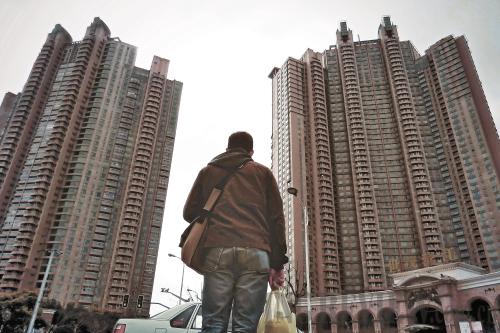|
 |
|
WHERE IS MY HOME: A man stands before a residential complex in Shanghai (CFP) |
When China's largest residential property developer Vanke in March launched its housing project, neighboring Beijing's South Sixth Ring Road, with a price tag of 21,000 yuan ($3,380) per square meter, 3,000 yuan ($480) lower than market expectations, voices predicting a continuous price hike in the housing market seemed to diminish. But the demand still proved to be robust, for all housing units were sold on the same day.
This rapid pace was echoed by another housing project in Beijing's Tongzhou District developed by R&F Properties. With an average price of 28,000 yuan ($4,510) per square meter, the housing project attracted thousands of homebuyers, most of whom were those aged around 30 years old.
As urbanization keeps moving forward, housing prices across the nation, especially in metropolises like Beijing, Shanghai and Guangzhou, have experienced vigorous growth.
Yet, the overall upward trend recently seemed to have come to a juncture. Despite the housing supply mounting up, homebuyers seem to have gradually lost their enthusiasm and the market has begun to calm down. In Wenzhou of east China's Zhejiang Province, housing prices have declined for 31 consecutive months, down 31 percent from the highest recorded level.
According to the National Bureau of Statistics, in February new home prices in 70 major cities rose by an average of 11.1 percent year on year, slowing by 1.3 percentage points from January; prices for existing homes rose 6.4 percent year on year, compared with an average growth of 7.4 percent in January; and on a month-on-month basis, 57 out of the 70 cities saw rises in new home prices, fewer than the 62 cities who experienced the same in January.
Differentiated control
Jia Kang, Director of the Research Institute for Fiscal Science, didn't believe China's property market is now heading toward an irretrievable collapse, reasoning rigid demand is still strong in big cities. "It is undergoing a polarization," Jia said.
Nonetheless, bubbles exist. "A sharp rise in housing prices always has something to do with speculation," noted Qiu Baoxing, Vice Minister of Housing and Urban-Rural Development, saying that what has happened to China now partly resembles the situation in Japan in the 1980s when market participants ranging from large enterprises to vegetable vendors jostled to have a finger in the property pie.
"People tend to believe housing trade is the most lucrative business. As a result, capital and human power keep flocking to the real estate sector, which exerts a crowding-out effect on the real economy," said Qiu.
In the mid- and late-1980s, Japan stuck to quantitative easing monetary policies in an effort to wrench itself out of the depression caused by the appreciating yen. At the same time, individuals as well as banks thought highly of the real estate industry and looked to further increase their level of investment in an asset they thought would appreciate in value. As excessive investment falsely reflected the real market demand and quickly shored up housing prices, the Japanese government suddenly tightened monetary policies, restrained real estate loans and imposed property taxes. Although bubbles were effectively squeezed out, the Japanese economy was thrown into an economic recession with heavy burdens of bad loans.
|
